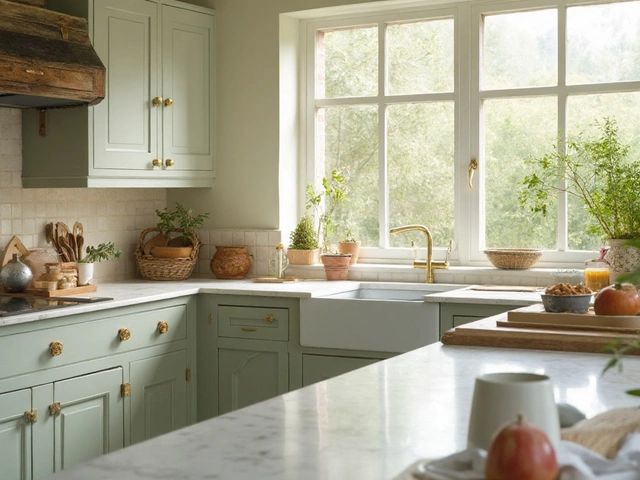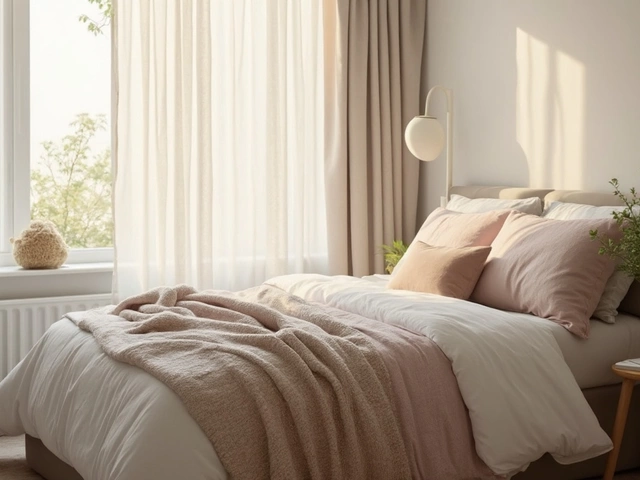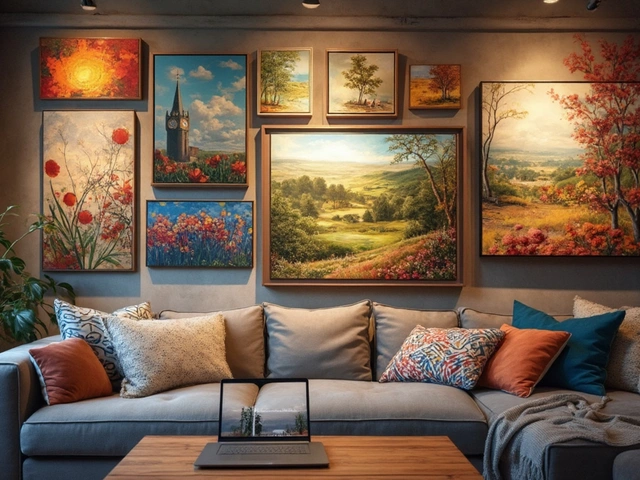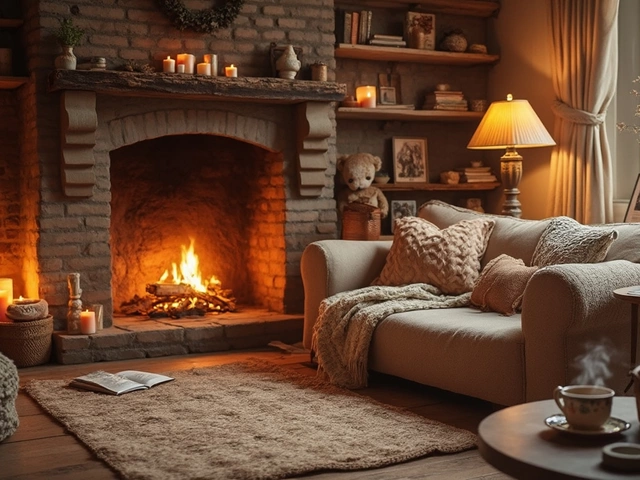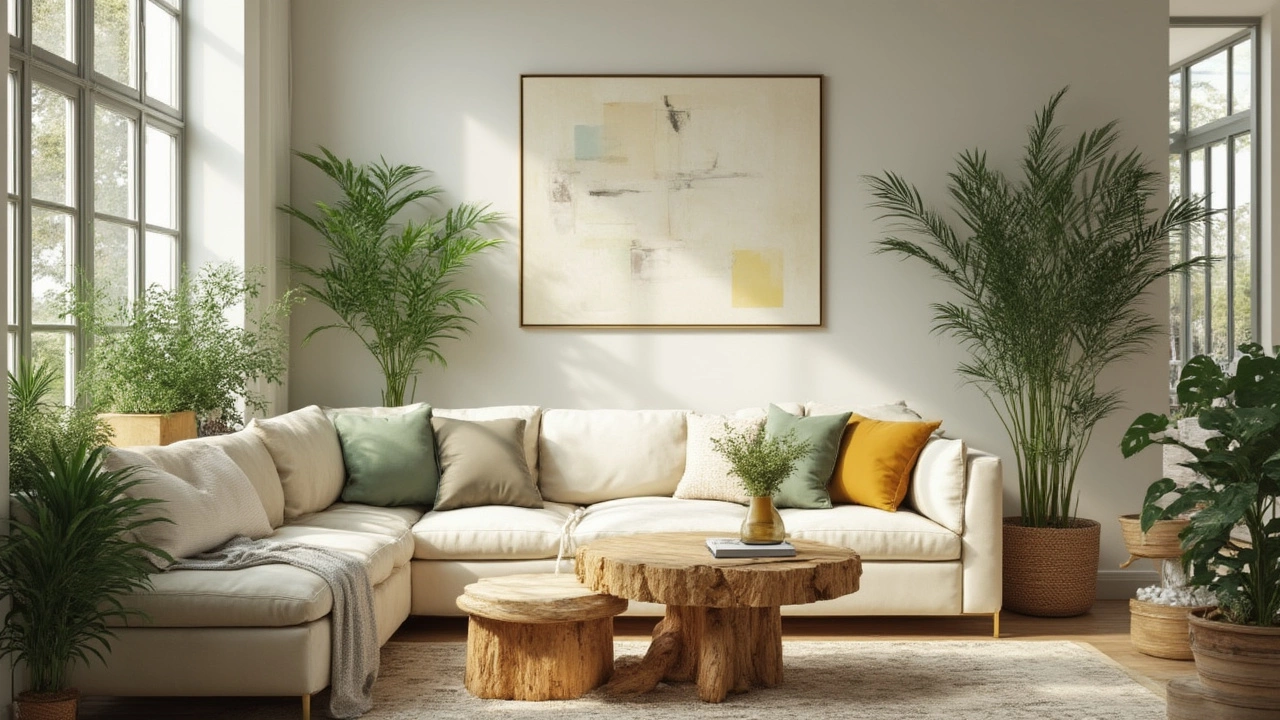
Picture walking into a room that just breathes calm and style—the lines are clean, the space feels open, and everything looks thoughtfully chosen. That's modern home decor today. And you don’t have to live in a million-dollar glass box to get the vibe right. The signature of modern decor isn't about cold, empty rooms or just sticking to black and white. It's about finding that sweet spot between useful and beautiful, personal and streamlined, cozy and cool. The funny thing is, many people still think "modern" just means anything that's not antique, but it’s actually a full-blown movement with real roots in history, cool ideas borrowed from the past, and fresh updates we see every year. Let's get into the details and see what really matters in making a home feel modern—and livable.
Origins and Evolution of Modern Home Decor Style
First off, this style actually started making waves over a century ago. The roots go all the way back to the late 1800s and early 1900s, when people ditched the heavy patterns and wild ornamentation of Victorian homes. Enter visionaries like Le Corbusier, Frank Lloyd Wright, and Mies van der Rohe—their buildings and interiors were all about clean lines, big open windows, and letting natural light do most of the magic. This modern movement was closely tied to the rise of new materials like steel, glass, and concrete, and to new ways of thinking about how we actually live in our homes. If you’ve ever felt claustrophobic in a grandma-style parlor stuffed with trinkets, that’s the world the modernist crowd wanted to escape.
The post-war era really kicked things up a notch. People wanted homes that were fresh, casual, and easy to maintain. That’s where you start to see the iconic low-slung couches, simple shapes, and lots of light. Jump to today, and modern home decor keeps evolving. It’s not stuck in the past, but still borrows ideas from mid-century modern classics, Scandinavian clarity, and minimalist Japanese interiors. You’ll notice lots of open floor plans, multipurpose spaces, and furniture that does more than one thing. It all comes down to crafting rooms that feel good to live in every single day, and not being afraid to mix in new tech (hello, smart lighting) or sustainable features (like recycled wood or eco-paint).
Here’s the kicker: a study by Zillow found that "modern" in a home’s listing description can boost a home’s perceived value by up to 7%. Apparently, buyers dig that crisp, uncluttered look. It just feels easier to picture your own life in a space when there's less visual noise. The thing is, modern isn’t one-size-fits-all. Some folks love a sleek, all-white kitchen with barely-there handles. Others go for a warm, wood-and-black combo that feels straight out of a cool boutique hotel. Trends change, sure, but the core idea—simplicity plus function—sticks around for a reason. Even designers swear that getting the mix just right is more about experimenting than copying a magazine spread. Trust your gut and tweak as you go.
Defining Features of Modern Home Decor
So, what really separates modern decor from other styles? Let’s talk about the biggest hallmarks: clean lines, neutral colors with pops of bold, smart use of space, and furniture that looks as good as it feels. Modern design strips out clutter (sorry, random knick-knacks), focusing instead on strong shapes and “negative space”—the empty bits that actually help everything breathe. This is why lighting and layout are such huge deals. Flip through a modern home magazine, and you’ll spot sunlight pouring in from big windows or clever skylights, showing off the space instead of hiding it behind curtains.
Color-wise, modern interiors usually kick off with a simple base—think white, gray, beige, or black. But that doesn’t mean you’re only allowed to use boring shades. These days, people are mixing in bright colors—burnt orange, deep blue, moss green—even patterned rugs or bold art, to keep things lively. A fun fact: the 2024 Pinterest Predicts report pointed to "open concept kitchens with bold marble," "earth-tone walls," and "oversized lighting" as some of the hottest details in modern home makeovers. So don’t be afraid to mix it up as long as the palette doesn’t fight for attention.
Texture also plays a huge role. A modern living room isn’t just a sea of white walls. You might see a chunky wool throw over a leather couch, smooth concrete floors paired with plush area rugs, or matte black fixtures next to glossy ceramics. The key is creating layers people want to reach out and touch, but not overwhelming the eye.
And you can’t ignore the open floor plan trend. Walls are knocked down to make living, dining, and kitchen areas flow together, especially in city apartments or homes built after 2000. Apartment Therapy’s data showed that 70% of modern home tours featured flexible layouts over closed-off rooms. It makes parties more fun (everyone’s in on the action), and makes family time a totally different experience. Of course, for privacy or zoning, a bookshelf or plant wall can create new "rooms" without killing the light.
If you’re thinking about putting together your own modern space, here are some quick pointers:
- Focus on quality over quantity. One well-made sofa beats three cheap ones.
- Stick with simple shapes for big items—rectangle tables, round mirrors, square cushions.
- Keep the eye moving with different materials: glass, metal, stone, fabrics.
- Resist the urge to fill every nook. Give your stuff room to stand out.
- Use large-scale art or statement pieces instead of lots of little things.
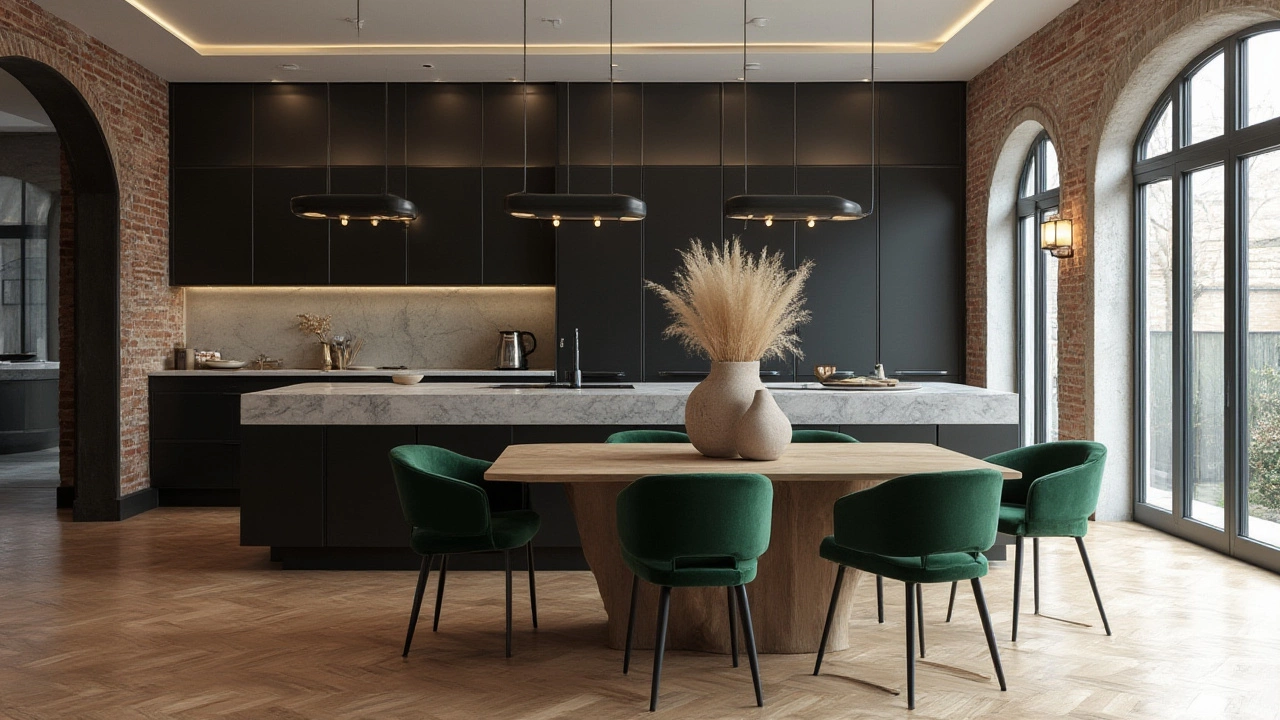
Color Palettes, Materials, and Furniture Trends
Okay, let’s get a bit more specific. The color palette you pick totally changes the mood. The most memorable modern rooms lean on a foundation of neutrals, but it doesn’t have to be icy or flat. Instead, you might layer soft taupe walls with smoky gray furniture, or add in natural woods and accents in rust or olive green. In 2025, muted tones like clay, sand, sage, and charcoal are huge, and they mix beautifully with textures. The trick is balancing "earthy" with "fresh," so it looks natural—never drab.
When it comes to materials, modern doesn’t mean plastic everything. Real wood—especially oak and walnut—gives warmth without looking dated. Concrete is showing up in countertops and coffee tables, lending some weight and coolness. Metal finishes, especially matte black, brushed brass, and even bronze, give fixtures or table legs a crisp edge. Glass is everywhere, from pendant lights to floating shelves. The core idea is simple: pick a few materials that vibe together and repeat them so the space feels intentional.
| Trending Modern Materials | Best Rooms for Use | Why It Works |
|---|---|---|
| Light Oak Wood | Living, Kitchen, Bedroom | Warms up the neutrals, feels inviting |
| Concrete | Kitchen, Bathroom | Strong, easy to clean, modern edge |
| Matte Black Metal | Bath, Lighting, Hardware | Adds contrast, feels upscale |
| Natural Fibers | Living, Bedroom | Layered comfort and texture |
Furniture in modern home decor proves that comfort and style don’t have to fight. Picture a sleek, low-profile sofa with plush cushions instead of stiff perches. Dining tables nowadays are bigger and more sociable—Fiona actually convinced me to get a round table last year, and now even holiday dinners are more fun. Chairs and coffee tables often have unexpected legs or geometric details that add interest without being wild. Modular pieces, like sectional sofas or customizable shelving units, let you switch up your setup when you need to.
Lighting, too, is center stage. Think big globe pendants, sculptural floor lamps, or LED strips that can change color and mood with a tap. A 2023 tech review showed that "smart" lights that dim or shift hue—Philips Hue or Nanoleaf lines, for example—are in about 30% of remodels called out as "modern" in design blogs. It’s a small tech upgrade that can rock the entire space, especially paired with sunlight from open-plan windows.
One of the best parts about modern home decor? You can make it look high-end without going broke. Hunt for solid pieces at big-box stores or even thrift shops, then swap out hardware or legs for a custom twist. Layer different rugs for comfort. Mix in a vintage chair or bold art print. Modern means playing with the mix and making things yours, not copying a catalog page.
Personalizing Modern Spaces: Tips and Mistakes to Avoid
Let’s be honest, some modern homes end up looking like furniture showrooms—nice but impersonal. That’s not the goal. To keep things feeling fresh and yours, mix a few personal pieces into your modern setup, but keep them curated. For example, display a single family photo or two, not an entire shelf. Use art that makes you smile, not just whatever’s trending. Incorporate a favorite color as an accent, or throw a wild-patterned pillow on your sofa. The magic happens when personal touches blend with the calm base—kind of like a cool outfit with one unexpected accessory.
Plants are a game changer. Literally any modern room perks up with live greenery—think snake plants, fiddle leaf figs, or even a big, sculptural cactus. According to the National Gardening Association, indoor plant sales grew over 20% between 2019 and 2024, with millennial homeowners in particular boosting this trend. Adding natural life softens the edges and adds some non-repeating patterns to the clean lines of modern design.
Commit to decluttering, but don’t go crazy. Modern style isn’t "empty house chic." Store things you use often in drawers, baskets, or smart storage benches. If something doesn’t "spark joy" (as Marie Kondo would say), out it goes, but allow for real life—a pile of books, a cozy throw, or your favorite mug on the coffee table.
Here are classic mistakes people make when going modern—and how to avoid them:
- Too much matching. Vary your finishes and shapes, or things will feel stiff.
- Ignoring texture. Mix up rough and smooth, matte and shiny for interest.
- Bad lighting. Combine overhead, task, and accent lights so the space works any time of day.
- Overdoing minimalism. A room that’s too sparse can feel cold—add some softness with throws, cushions, or books.
- Skipping personal touches. At least one thing in every room should tell your story.
It’s wild how pulling one modern piece into a room lifts everything else. Buy a single bold lamp or swap a clunky coffee table for a glass one and you’ll see the effect instantly. Literal data backs this up: Houzz reports show that upgrading a central fixture (like a major chandelier or sofa) leads homeowners to tweak or improve the rest of their space. There’s a reason those before-and-after home shows nearly always start with a killer statement!
If you’re a parent or hosting friends a lot, skip "precious" surfaces that scratch up fast or pale rugs you’ll be scrubbing every week. Modern doesn’t mean high-maintenance. Choose practical finishes—easy-to-clean leathers, hard-wearing fabrics, or sealed woods. Storage ottomans hide clutter and double as extra seating, perfect for movie nights or spontaneous hangouts. Even pets can join in—dog beds that match your *modern home decor* style are not just for Instagram anymore.
